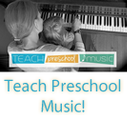Hannah Creviston, Victoria Jacobs, and Heather Wheeler presented this session, each coming from different perspectives and diverse experiences, but with a desire to help music educators best know how to teach children with autism.
Hannah began with a poem about someone planning a trip to Italy, but ending up in Holland. Dealing with children with autism is not bad, but just different. They have different ways of understanding and processing.
The incidence rate of autism is continually rising. 1 in 88 children currently are diagnosed with autism. This is a dramatic increase from 1 in 2500 in the mid-1980s. Autism is four times more likely to occur in boys than in girls. Some statistics show that many of these children will lose the diagnosis as they become adults.
Autism is a spectrum disorder, meaning that the severity of it can be drastically different in different people. Children with autism exhibit deficits in:
* Communication Skills – delayed speech, small vocabulary, difficulty understanding conversation, repeating words and phrases (many of these students have “steel trap” minds, retaining details of what they’ve been told)
* Social Interactions – no eye contact, lack of facial expression, playing on their own even in group settings
* Behavioral Skills – tip-toeing, focusing on parts of a toy rather than the whole thing, hand-flapping, obsessive compulsive organization in play
“If a child cannot learn in the way we teach…we must teach in a way the child can learn.” ~Dr. O. Ivar Lovaas
As teachers, it’s our job to find the “puzzle piece” to teach these children in a way that they can learn.
Tips:
* See the child, not the diagnosis.
* Each child is different.
* Teach visually.
* Be aware of environmental distractions (ambient noises, rearranged furniture, etc.).
* Avoid multiple terms for the same concept (start with the desired end vocabulary right off the bat; be literal).
* Be structured, but flexible (routine and schedule and order are very important).
* Tackle one issue at a time.
* Be patient with yourself and your student (their behavior is unpredictable and should not be taken personally).
* Give the student time to process questions and concepts (don’t expect immediate feedback).
Victoria shared from her perspective as a mother as well as a teacher. She had never heard of autism when her son was diagnosed with it at the age of five. If you want to know how to structure a good music lesson, she recommends, “The Me Book” by Dr. Lovaas. Visit his website for more information. He advocates that these children can be contributors to society in a meaningful way.
Children with autism don’t usually recognize body language, gestures, or facial expressions. They often are not spacially aware, so if you come stand right next to them they won’t move over.
Executive Function:
* I can organize my stuff and yours, but I cannot mentally file information.
* need a menu of options to think through a problem.
Children with autism need a method that is incremental. Staying in the same position, using the same finger on the same keys is very important. Victoria recommends Leila Fletcher’s Music Lessons.
Focus on Rules…especially ones that don’t change:
* Begin with absolutes.
* Use the same music vocabulary that you would with an adult.
* Layer one concept at a time with lots of repetition and practice (consider which layer goes on the bottom – for note reading, think of the staff as the bottom layer, then the clef, then the notes, etc.).
* Keep the lesson routine the same every time.
Don’t let the child take charge of their own learning; they will make rules for you! Be clear about your roles as a teacher and student. Be firm in what you expect and require of them. Consider how to help the student be successful in the real world.
Heather shared about her experience with several students. Before she first met with her prospective student, she contacted Scott Price for advice and worked with the student’s mother to put together a lesson plan. This involved moving the piano (away from a mirror that would distract), directing him immediately to the bench when he arrived, putting together a page with velcro squares that identified each activity they would include in the lesson. As they completed each activity, the square was removed from the board.
The first major decision was whether to teach him by reading or by rote. Heather was more comfortable with reading, but could tell that the student would be more successful with rote learning. He could already play things by rote that he had learned from movies. His mom was very involved in the lessons, participating as much as possible to assist with learning and reinforcing specific techniques and skills. While he imitated tunes by ear, Heather and his mom worked to adjust his hand position and fingering.
When teaching reading, it is essential to assign only one absolute name to each note.
Recitals were a great opportunity for him to be successful. His mom had to help him stay focused on the playing rather than on the audience.
Her other student was high-functioning, and she didn’t even know for a couple of years that he was in the autism spectrum. Often, all it took was one simple instructive for him to stop burping or stop making a tick-tock noise whenever she was talking.
Once her student learned a piece, if he had learned it with an incorrect note and she corrected it, it was very traumatic for him.
The biggest challenge was teaching musicality. Conversations about tone, phrasing, dynamics, character of the music, etc. didn’t work. When she wrote very specific dynamic markings in the score, though, he was able to follow the markings and play musically. Being concrete is essential because they don’t understand abstract concepts and emotions.
An audience member asked about the model of weekly lessons and whether we need to re-think that for students with autism. The presenters said that the daily involvement and reinforcement of the parent is essential. Hannah video records her lessons and uploads them to YouTube and her student watches them over and over during the week.
A question was posed about the difference between autism and Asperger’s syndrome. Tony Attwood’s book, “Asperger’s Syndrome” is a good resource for understanding the criteria for different levels of autism on the spectrum.
Everything must be taught step-by-step. Children with autism do not learn environmentally, so they won’t connect the fact that no one else is doing something a certain way. They love rules and will thrive if they are given a rule that they can follow in the given situation.
















Leave a Reply